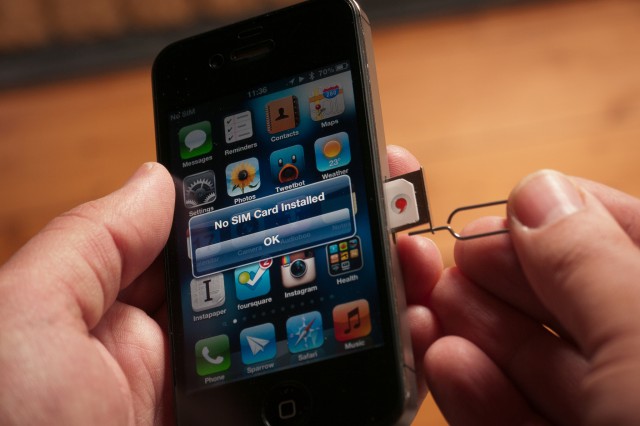
If you have an AT&T unlimited data plan and are looking for a creative way to avoid throttling, you’re probably gonna have a bad time.
As we reported last week, AT&T is still throttling unlimited LTE plans once users hit 5GB in a month, even when there’s no network congestion. That’s despite a lawsuit filed against AT&T by the Federal Trade Commission and criticism from Federal Communications Commission Chairman Tom Wheeler.
However, AT&T imposes a less-strict policy on non-LTE plans—those users are only throttled in times and places where the network is congested. AT&T claims there is some kind of technological limitation preventing it from treating all customers the same but that it will eliminate the gap sometime next year. “Once technologically available, we expect to adopt the same model for customers with 4G LTE smartphones on unlimited plans sometime in 2015,” the company told Ars last week.
Since 3G plans aren’t throttled except when the network is congested, some users have tried preventing throttling by turning off their 4G LTE connection. Unfortunately, it doesn’t work.
“When I hit the 5GB limit, I have turned off LTE and my connection is still slow,” AT&T customer Andy Abreu of High Springs, Florida told Ars. “It appears that they throttle the account not only on LTE, but also 3G. From what I can piece together, it appears that they identify it by the SIM card ID, regardless of the LTE connection.”
Abreu also tried swapping his SIM card to a non-LTE phone but was still throttled. Abreu and his wife eventually switched to a capped plan that provides 40GB a month without any automatic throttle point. Abreu gets an impressive 80Mbps on his phone when the AT&T network is running smoothly, but as little as 0.11Mbps when his service is throttled.
“I do feel that the network is useless at 0.11Mbps and they drove me out of my unlimited plan,” he wrote in an e-mail. “I feel that there is definitely a legal issue here, since there is no reason why they throttle a certain rate customer. I signed an unlimited plan, and never in any documents did it say that I couldn't use it after 5GB.”
Additionally, Abreu said he only received notification texts from AT&T the first time he was throttled. “After that first text, you just get throttled without warning,” he told Ars. “I just kept an eye out during the month not to hit the 5GB limit to avoid throttling… It's pretty sad that they can get away with that.”
We posed the following questions to AT&T this week: “Why can’t AT&T’s system apply the ‘only when the network is congested’ standard to users who switch off LTE or move the SIM card into a 3G phone? If the throttling happens based solely on identification of a user’s SIM card, why is it so hard to apply one standard to all users? Are the SIM cards for LTE-capable phones that much different from 3G and HSPA+ that they need a different throttling standard applied?”
An AT&T spokesperson declined to answer the questions or provide any further response.
“Do six spins around your phone and jump up and down four times”
Some AT&T customers have looked for more convoluted workarounds than turning off LTE or swapping phones, with temporary success. “Like many users, I have endured the dreaded 0.2Mbps throttle from AT&T for months,” one iPhone user wrote on the MacRumors forums in September 2013. “I use Pandora/Spotify all day while I work, so reaching 5GB can take less than 10 days.”
The user’s workaround was unique, to say the least:
- Start with disabling LTE, then turn on airplane mode
- Call yourself; when prompted, disable airplane mode
- Hang up after five seconds, then enable LTE
- You are now unthrottled
The workaround “stays this way until I restart my phone or toggle LTE,” the user wrote. The same user reported in December 2013 that the workaround stopped being effective but that he discovered an even more complicated workaround:
- Turn off LTE
- Turn on airplane mode
- Shut off your phone
- Turn on your phone
- Call yourself
- When asked, disable airplane mode
- Then immediately call yourself
- Hang up after 10 seconds
- Turn on LTE
Some other users had success with these methods, but it appears they no longer work. The MacRumors forum thread has been periodically updated throughout this year. “Has anyone found other ways yet? This method no longer works,” one user asked in January.
“Yep, I don't think this workaround works for AT&T throttling any longer,” another person wrote last month.
The absurdity of trying to find ever more complicated methods of tricking AT&T’s network into not throttling unlimited data that customers have paid for was not lost on commenters.
“I thought you had to do six spins around your phone and jump up and down four times,” one user wrote. “And then you're unthrottled.”
reader comments
81